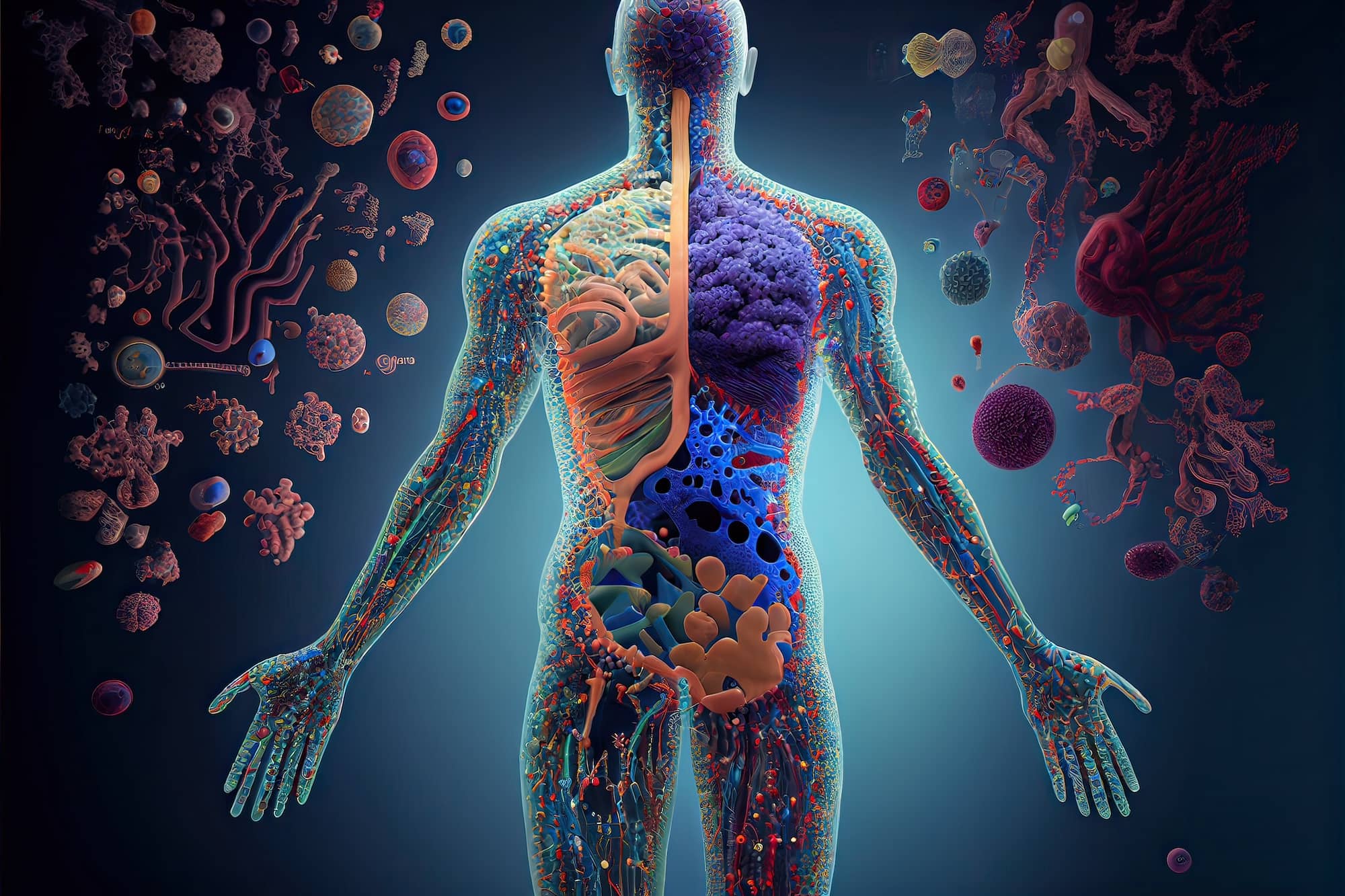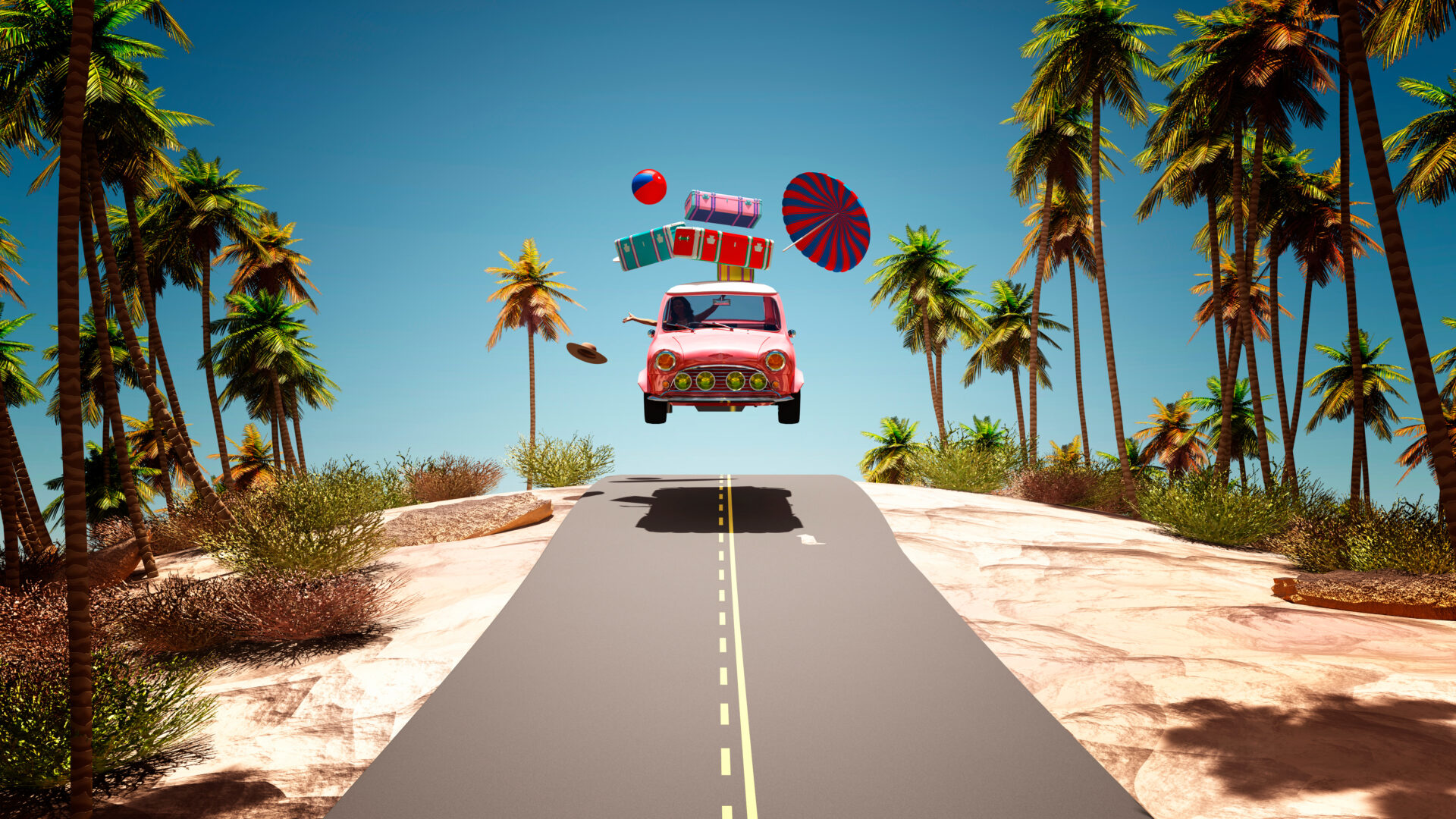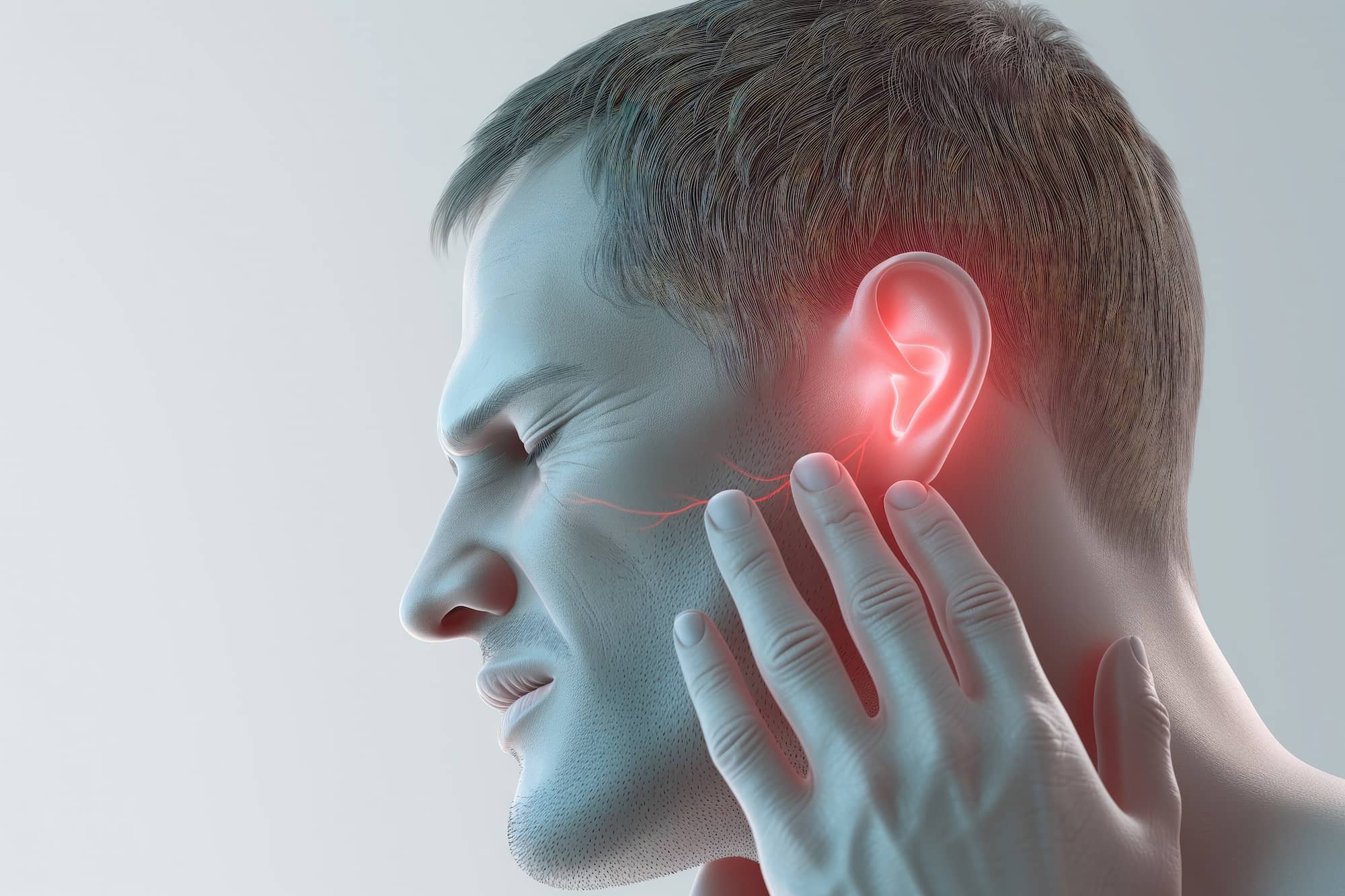Posts by Barton Chiropractic Clinic
Fall Yard Work
Fall brings beautiful changes in nature, but it also comes with an increase in outdoor chores like raking leaves, cleaning gutters, and preparing your yard for winter. While these tasks are essential, they can be physically demanding and increase the risk of injury, especially to the back, shoulders, and neck. This is where chiropractic care can make a significant difference. By keeping your spine aligned and your muscles functioning properly, chiropractic adjustments help prevent injuries during fall yard work.
Improves Flexibility and Mobility
One of the key benefits of chiropractic care is improved flexibility and mobility. Regular adjustments help keep the spine in proper alignment, which reduces tension in surrounding muscles and joints. This is crucial when performing repetitive tasks like bending, lifting, or twisting while raking or gardening. Without proper mobility, these movements can lead to muscle strain, joint pain, or even serious injury. A chiropractic checkup before starting your fall yard work ensures your body is in its best possible condition to handle these physically demanding activities.
Reduces the Risk of Back Strain
Raking leaves, hauling heavy bags, and lifting equipment can put excessive pressure on the lower back. Many people suffer from back strain during fall due to improper lifting techniques or overexertion. Chiropractic care focuses on maintaining proper spinal alignment, which helps evenly distribute the physical load across the body, preventing any one area—especially the lower back—from bearing too much strain. Chiropractors can also provide helpful tips on proper posture and body mechanics to reduce the risk of injury when lifting heavy items.
Relieves Muscle Tension
Yard work can cause muscles to tighten, especially in the neck, shoulders, and upper back. Chiropractic adjustments relieve muscle tension by releasing tight spots, allowing muscles to relax and function more efficiently. In addition to realigning the spine, chiropractors use techniques like soft tissue therapy to loosen stiff muscles, which is essential for preventing injuries that often result from muscle overuse.
Speeds Up Recovery After Yard Work
Even with precautions, yard work can leave you feeling sore or fatigued. Chiropractic care not only helps prevent injury but also speeds up recovery by promoting healthy blood flow and reducing inflammation in the body. After a session of strenuous yard work, a chiropractic adjustment can help alleviate any lingering aches or pains, ensuring that minor strains don’t turn into long-term issues.
Enhances Overall Wellness
Chiropractic care goes beyond treating injuries; it also helps promote overall health and well-being. By ensuring your spine and nervous system are functioning at their best, you can take on fall yard work with confidence, knowing your body is aligned and ready to perform at its peak.
In conclusion, chiropractic care plays a vital role in preventing injuries during fall yard work. By improving flexibility, relieving muscle tension, and supporting proper posture, regular chiropractic adjustments help you safely and efficiently tackle the outdoor chores that come with the season.
Click here to contact our Office or call 708-922-1400
Stress Relief
In today’s fast-paced world, stress has become a common part of everyday life. Whether it’s from work, family responsibilities, or financial concerns, stress impacts both mental and physical well-being. One often overlooked method for managing stress is regular chiropractic adjustments. Chiropractic care not only addresses physical discomfort but also helps the body manage and relieve stress more effectively.
Reduces Physical Tension
Stress often manifests in the body as muscle tension, particularly in the neck, shoulders, and back. This tension can lead to discomfort and pain, which further contributes to feelings of stress. Regular chiropractic adjustments target these areas of tension by realigning the spine and releasing muscle tightness. When the body is free from physical tension, it becomes easier to relax, helping to break the cycle of stress and discomfort.
Improves Nervous System Function
The spine houses the central nervous system, which controls nearly every function in the body, including how it responds to stress. Misalignments in the spine, known as subluxations, can interfere with nerve signals and hinder the body’s ability to cope with stress. Chiropractic adjustments correct these misalignments, allowing the nervous system to function at its best. When the nervous system is balanced and free from interference, the body is better equipped to handle stress, leading to improved mental clarity and emotional resilience.
Enhances Hormonal Balance
Stress relief through chiropractic care can also positively impact the body’s hormonal balance. Regular adjustments have been shown to influence the production of cortisol, the hormone most closely associated with stress. By helping to regulate cortisol levels, chiropractic care allows the body to better manage its stress response, reducing feelings of anxiety and tension. Additionally, chiropractic adjustments promote the release of feel-good hormones such as endorphins, which naturally improve mood and overall well-being.
Promotes Better Sleep
Stress often disrupts sleep, leaving people feeling fatigued and less capable of managing daily challenges. Chiropractic care improves sleep quality by reducing pain and discomfort, relaxing the nervous system, and promoting overall balance in the body. When you sleep better, your body has more energy to cope with stress and maintain a positive outlook.
Supports a Holistic Approach to Health
Chiropractic care encourages a holistic approach to health, focusing on the connection between the body and mind. Regular adjustments not only treat physical symptoms but also help individuals feel more centered and less overwhelmed by daily stressors. Chiropractors often offer lifestyle advice, such as exercise recommendations and nutritional guidance, to further support stress relief and overall wellness.
In conclusion, regular chiropractic adjustments play a crucial role in managing stress. By relieving physical tension, improving nervous system function, balancing hormones, and enhancing sleep, chiropractic care helps individuals achieve a healthier, more balanced response to the stresses of life.
Click here to contact our Office or call 708-922-1400
Spine Health
As students return to school, their backpacks grow heavier, and their screen time increases. These factors can have a lasting impact on their posture and spinal health if not addressed early. By taking simple steps, you can protect your child’s spine and promote healthy habits that last a lifetime.
Choose the Right Backpack
The first step in preventing spinal issues is selecting the right backpack. A well-designed backpack should have two wide, padded straps to distribute weight evenly across the shoulders. Encourage your child to use both straps rather than slinging it over one shoulder. A backpack with multiple compartments will help organize items and balance the load, preventing strain on their back.
Keep It Light
A heavy backpack is one of the most common causes of poor posture in students. Ensure that your child’s backpack weighs no more than 10-15% of their body weight. Teach your child to prioritize what they carry, leaving unnecessary books and items at home or in their locker. Regularly cleaning out the backpack helps reduce the load and prevents long-term stress on the spine.
Teach Good Posture
When sitting in class or at home studying, posture is key. Encourage your child to sit up straight, keeping both feet flat on the floor and their back against the chair. Their shoulders should be relaxed, and their head level with their monitor or textbook. Slouching or leaning forward places stress on the spine and can lead to discomfort over time.
Screen Time Awareness
With increased screen time for schoolwork and recreation, it’s important to address “tech neck” — the strain caused by looking down at devices. Encourage your child to hold screens at eye level and take regular breaks to stretch and move around. Setting a timer for breaks can help remind them to adjust their posture and prevent strain.
Regular Chiropractic Checkups
Preventive care can go a long way in maintaining your child’s spinal health. Regular chiropractic checkups help identify any posture issues early on and provide adjustments that can correct misalignments. A chiropractor can also offer personalized advice on maintaining good posture throughout the school year.
Protecting your child’s spine now will set them up for a healthy future. By following these simple tips, you can prevent unnecessary pain and discomfort during the busy school year.
Click here to contact our Office or call 708-922-1400
Immune Function
Chiropractic care, often associated with relieving back pain and improving spinal health, plays a more significant role in overall wellness than many realize. Recent research highlights how chiropractic adjustments can boost immune function, providing a holistic approach to health that goes beyond pain management.
The immune system is our body’s defense against infections and diseases. It works tirelessly to identify and destroy harmful invaders like bacteria and viruses. However, a compromised or weakened immune system can lead to increased susceptibility to illnesses. This is where chiropractic care steps in.
The central nervous system, which includes the brain and spinal cord, controls every function in our body, including the immune system. When the spine is misaligned, it can disrupt the communication between the nervous system and the immune system, potentially weakening the body’s ability to fend off illness. Chiropractic adjustments correct these misalignments, or subluxations, restoring proper nerve function and, consequently, enhancing immune response.
Several studies support the connection between chiropractic care and improved immune function. For instance, research published in the Journal of Manipulative and Physiological Therapeutics found that chiropractic adjustments can influence specific immune system components, such as increasing the production of white blood cells. White blood cells are crucial for fighting infections, and an increase in their production suggests a more robust immune response.
Another study conducted by Dr. Ronald Pero, a leading cancer prevention researcher, revealed that individuals who received regular chiropractic care had a 200% greater immune competence than those who didn’t. His findings suggest that spinal adjustments may not only help maintain a well-functioning immune system but also potentially protect against illnesses.
Chiropractic care promotes overall wellness by reducing stress.
Stress is known to weaken the immune system. Chronic stress leads to the release of cortisol, a hormone that can suppress immune function. By alleviating physical stress through spinal adjustments, chiropractic care helps to lower cortisol levels, thereby supporting a stronger immune system.
Incorporating chiropractic care into your wellness routine is a proactive step towards enhancing your body’s natural defense mechanisms. Regular adjustments can keep your spine aligned, ensuring that your nervous system communicates effectively with your immune system. As a result, your body is better equipped to prevent illness and maintain optimal health. With the backing of emerging research, chiropractic care stands out as a powerful tool in supporting and boosting immune function, offering a holistic approach to staying healthy year-round.
Click here to contact our Office or call 708-922-1400
The Fall Season
As the fall season approaches, our bodies often face new challenges. Cooler temperatures can lead to stiff joints and tight muscles, while seasonal activities like raking leaves, carrying heavy bags of mulch, or spending more time indoors can strain the body in different ways. Preparing your body for these changes is essential to staying healthy and active throughout the season. Chiropractic care offers a holistic approach to helping your body adapt and thrive during this transition.
One of the key benefits of chiropractic care in the fall is the improvement of joint mobility. As the weather cools, many people experience increased joint stiffness, particularly in the morning or after sitting for long periods. Regular chiropractic adjustments can help maintain or restore joint flexibility, making it easier to move comfortably and preventing the onset of pain or injury.
In addition to enhancing mobility, chiropractic care can also help strengthen your body’s overall posture and alignment. Fall often involves tasks that put extra strain on the body, such as raking leaves or lifting heavier objects. Poor posture during these activities can lead to back pain, neck strain, or even more serious injuries. Chiropractors can provide adjustments that align the spine and pelvis, reducing the risk of injury and helping you maintain proper posture during seasonal chores.
Another benefit of chiropractic care is its potential to boost your immune system. As the fall season brings cooler weather and the start of flu season, maintaining a strong immune system becomes crucial. Chiropractic adjustments support the nervous system, which plays a vital role in overall health, including immune function. By keeping your nervous system functioning optimally, chiropractic care can help your body better defend itself against seasonal illnesses.
By incorporating chiropractic care into your fall routine, you can prepare your body to handle the physical demands of the season, reduce the risk of injury, and support overall health and well-being.
Click here to contact our Office or call 708-922-1400
Arthritis
Chiropractic treatment offers a holistic approach to managing arthritis, focusing on improving joint function, reducing pain, and enhancing overall mobility. Chiropractic care can be a valuable component of a comprehensive treatment plan, helping individuals with arthritis lead more active and pain-free lives.
One of the primary benefits of chiropractic treatment for arthritis is its emphasis on spinal adjustments. These adjustments aim to correct misalignments in the spine, which can alleviate pressure on the nervous system and improve joint function. When the spine is properly aligned, the body’s ability to heal and function optimally is enhanced. For arthritis patients, this can mean reduced pain, less stiffness, and improved range of motion.
Dr. Barton uses manual therapy techniques, such as joint mobilization and soft tissue manipulation, to address the symptoms. These techniques help to increase joint flexibility, reduce inflammation, and improve circulation in the affected areas. By improving blood flow, chiropractic care can promote the body’s natural healing processes, helping to repair damaged tissues and reduce the severity of symptoms.
In addition to spinal adjustments and manual therapies, chiropractors often provide personalized exercise programs designed to strengthen the muscles surrounding the joints. Stronger muscles can better support the joints, reducing the strain placed on them and, consequently, the pain associated with arthritis. These exercise regimens are typically low-impact, focusing on improving flexibility, balance, and strength without exacerbating joint pain.
Dr. Barton also emphasizes lifestyle modifications that can help manage arthritis symptoms. This may include recommendations for ergonomic changes in daily activities, dietary advice to reduce inflammation, and stress management techniques. Chiropractors take a whole-body approach, addressing not only the physical aspects of arthritis but also the lifestyle factors that can influence the condition.
Moreover, chiropractic treatment is drug-free, making it an appealing option for those seeking to avoid the side effects associated with long-term medication use. By focusing on natural methods of pain relief and joint function improvement, chiropractic care can be an effective complement to other arthritis treatments, such as physical therapy, medication, or surgery.
Barton Chiropractic Clinic offers a multifaceted approach to managing arthritis. Through spinal adjustments, manual therapies, exercise, and lifestyle advice, chiropractors can help individuals with arthritis improve their joint function, reduce pain, and enhance their overall quality of life. This holistic, non-invasive approach makes chiropractic care a valuable option for those looking to manage arthritis naturally and effectively.
Click here to contact our Office or call 708-922-1400
Travel Tips
Maintaining Spinal Health on Your Summer Vacation
Summer vacations are a time for relaxation and adventure, but long journeys and unfamiliar environments can take a toll on your spine. Maintaining spinal health while traveling is essential to ensure you enjoy every moment of your trip without the discomfort of back pain. Here are some practical tips for keeping your spine in shape during your summer vacation.
1. Choose the Right Luggage
Your choice of luggage can significantly impact your spine. Opt for a suitcase with wheels and a retractable handle to minimize the strain on your back. When using a backpack, make sure it has padded straps and a supportive back panel. Pack light and distribute the weight evenly to avoid putting excessive stress on one side of your body.
2. Practice Good Posture
Whether you’re driving or flying, maintaining good posture is crucial. Sit up straight with your back against the seat and avoid slouching. Use a lumbar support pillow or roll up a towel to place behind your lower back for additional support. Adjust your seat to ensure your knees are at a right angle and your feet are flat on the floor.
3. Take Frequent Breaks
Long periods of sitting can lead to stiffness and back pain. If you’re on a road trip, plan regular stops to stretch and move around. For air travel, take advantage of opportunities to stand up and walk the aisle. Even a few minutes of movement can make a big difference in preventing discomfort.
4. Stretch and Exercise
Incorporate simple stretches and exercises into your travel routine to keep your spine flexible and strong. Gentle neck stretches, shoulder rolls, and lower back stretches can alleviate tension. Additionally, core-strengthening exercises like planks and pelvic tilts help support your spine and improve posture.
5. Stay Hydrated
Hydration is often overlooked but plays a vital role in maintaining spinal health. Dehydration can cause discs in your spine to lose their cushioning, leading to discomfort. Drink plenty of water throughout your journey to keep your discs hydrated and maintain overall health.
6. Mind Your Sleeping Arrangements
Sleeping in an unfamiliar bed can sometimes cause back pain. If possible, bring your own pillow to maintain proper neck alignment. When staying in hotels, request extra pillows to support your back and legs. Experiment with different sleeping positions to find what works best for you.
7. Use Proper Lifting Techniques
When lifting luggage or any heavy items, use proper techniques to protect your spine. Bend at your knees and hips rather than your waist, and keep the item close to your body. Avoid twisting your spine while lifting; instead, pivot with your feet to turn.
8. Listen to Your Body
Lastly, pay attention to your body’s signals. If you experience any discomfort or pain, take a break and address it promptly. Ignoring pain can lead to more severe issues down the line.
By following these travel tips, you can maintain your spinal health and fully enjoy your summer vacation. Prioritizing your spine’s well-being will help ensure you return home feeling refreshed and pain-free. Safe travels!
Click here to contact our Office or call 708-922-1400
Enhancing Athletic Performance
Athletes constantly seek ways of enhancing athletic performance, and one often-overlooked resource is chiropractic care. Chiropractors specialize in optimizing the body’s musculoskeletal and nervous systems, which play crucial roles in athletic performance. Here’s how chiropractors can help athletes achieve their peak potential.
1. Enhancing Biomechanics:
Dr. Barton will focus on ensuring that the body moves correctly and efficiently, identifying and correcting misalignments in the spine and joints, which can impede proper movement. By restoring proper alignment, chiropractors help athletes achieve better posture and movement patterns. This optimization of biomechanics leads to more efficient energy use, reduced fatigue, and improved overall performance.
2. Improving Range of Motion:
A greater range of motion can significantly help in enhancing athletic performance. Chiropractors use adjustments and specific techniques to enhance joint mobility. Increased flexibility allows athletes to execute movements with more precision and power. Whether it’s a golfer’s swing, a soccer player’s kick, or a swimmer’s stroke, an improved range of motion translates to better performance and reduced risk of injury.
3. Boosting Strength and Stability:
Dr. Barton will often incorporate exercises and adjustments that strengthen the core and stabilize muscles. A strong core is essential for maintaining balance and generating power in almost every sport. By targeting these areas, he helps athletes develop a solid foundation that supports their performance. Enhanced strength and stability lead to better control and execution of movements.
4. Accelerating Recovery:
Recovery is a critical component of athletic performance. Chiropractors assist in speeding up the recovery process through various techniques such as spinal manipulations, soft tissue therapy, and electrical stimulation. These methods help reduce inflammation, alleviate pain, and promote healing. Faster recovery means athletes can train harder and more frequently without the setbacks of prolonged soreness or injuries.
5. Preventing Injuries:
Injury prevention is paramount for sustained athletic performance. Chiropractors perform thorough assessments to identify potential weaknesses or imbalances that could lead to injuries. By addressing these issues proactively, they help prevent injuries before they occur. Regular chiropractic care ensures that athletes maintain optimal physical condition, reducing downtime due to injuries.
6. Enhancing Nervous System Function:
The nervous system controls every movement and function in the body. Dr. Barton will ensure that the spine and nervous system are functioning correctly, which can lead to better coordination, quicker reflexes, and improved muscle response. Enhanced nervous system function can make a significant difference in the split-second decisions and movements that often define athletic success.
7. Personalized Care:
Chiropractors tailor their treatments to the specific needs of each athlete. They consider the demands of the sport, the athlete’s physical condition, and any existing injuries. This personalized approach ensures that athletes receive the care that best supports their performance goals.
Dr. Barton offers numerous benefits that can enhance athletic performance. From improving biomechanics and range of motion to boosting strength and preventing injuries, chiropractors play a vital role in helping athletes reach their full potential. By incorporating chiropractic care into their routine, athletes can enjoy improved performance, faster recovery, and prolonged careers.
Click here to contact our Office or call 708-922-1400
Summer Activities and Chiropractic Care
A Perfect Pair for Optimal Wellness
Summer brings a plethora of outdoor activities that promise fun and adventure, from hiking and swimming to biking and gardening. However, engaging in these activities often puts additional strain on our bodies, making chiropractic care an essential component of summer wellness.
Chiropractic care focuses on maintaining the health of your spine and nervous system, which play a critical role in overall body function. When your spine is properly aligned, your body operates more efficiently, reducing the risk of injuries and enhancing your performance in various activities.
One of the primary benefits of chiropractic care during the summer is injury prevention. Outdoor activities, while enjoyable, can lead to common injuries such as sprains, strains, and back pain. Chiropractors use adjustments to ensure that your spine and joints are correctly aligned, which helps prevent these injuries. For example, a well-aligned spine can reduce the risk of a pulled muscle while hiking or cycling.
Additionally, chiropractic care enhances athletic performance. Whether you’re an avid runner, a dedicated swimmer, or a weekend warrior, regular chiropractic adjustments can improve your flexibility, balance, and overall physical function. This is because chiropractic care helps optimize your body’s biomechanics, allowing you to move more freely and efficiently. As a result, you can enjoy your favorite summer activities with greater endurance and less discomfort.
Recovery is another crucial aspect of summer wellness where chiropractic care shines. After a day of intense activity, your muscles and joints may feel sore and fatigued. Chiropractic adjustments can alleviate this discomfort by promoting better circulation and reducing inflammation. This not only speeds up recovery but also helps prevent chronic pain and long-term injuries.
For specific activities, chiropractors offer tailored advice to maximize benefits and minimize risks. For instance, they can provide guidance on proper posture and technique for biking and hiking, which are critical for preventing back and neck pain. They also recommend warm-up and cool-down exercises that prepare your body for physical exertion and help it recover afterward.
Gardening, another popular summer pastime, often leads to back strain due to prolonged bending and lifting. Chiropractors can suggest ergonomic practices and stretches to keep your spine healthy while you tend to your garden.
Incorporating chiropractic care into your summer routine ensures you remain active, healthy, and pain-free. Regular check-ups with your chiropractor can identify and address potential issues before they become serious problems. This proactive approach to health allows you to fully enjoy all the adventures that summer has to offer.
So, as you plan your summer activities, remember to include chiropractic care in your wellness strategy. It’s a small investment that yields significant rewards, keeping you vibrant and energized throughout the season.
Click here to contact our Office or call 708-922-1400
Earaches
dr. Barton can play a significant role in alleviating earaches through a variety of techniques that address the underlying causes of this common condition. By focusing on the alignment and function of the spine and nervous system, chiropractors can reduce pressure and improve drainage in the areas related to ear pain.
One primary way she can help with earaches is by adjusting the upper cervical spine, specifically the area around the atlas and axis vertebrae. Misalignments in this region can lead to nerve interference, which may contribute to ear discomfort and infections. Through precise adjustments, chiropractors can correct these misalignments, promoting better nerve function and reducing the likelihood of earaches.
Additionally, chiropractors often employ techniques to enhance lymphatic drainage. Poor drainage can result in fluid buildup behind the eardrum, leading to pressure and pain. By using gentle manual therapy, chiropractors can stimulate lymphatic flow, aiding in the reduction of fluid accumulation and subsequently decreasing earache symptoms.
Chiropractic care also emphasizes the importance of a healthy nervous system. The nervous system controls many bodily functions, including those related to the ears. When there is optimal communication between the brain and the body, the chances of developing earaches decrease. Chiropractors ensure this by providing adjustments that maintain the health and integrity of the spinal cord and nerves.
In cases of chronic ear infections, particularly in children, chiropractic care can be a valuable alternative to repeated antibiotic treatments. By addressing structural issues and improving immune system function through spinal adjustments, chiropractors can help reduce the frequency and severity of ear infections. Parents often seek chiropractic care for their children to avoid the side effects and potential resistance associated with long-term antibiotic use.
Moreover, chiropractors educate patients on lifestyle factors that can impact ear health. This may include advice on proper posture, nutrition, and exercises that support spinal health and overall well-being. For instance, maintaining good posture ensures that the Eustachian tubes, which connect the middle ear to the back of the throat, remain unobstructed, facilitating proper drainage and reducing the risk of earaches.
Dr. Barton offers a holistic approach to managing earaches by addressing spinal misalignments, promoting lymphatic drainage, and supporting a healthy nervous system. Through these methods, she not only provides relief from ear pain but also works towards preventing future occurrences, offering a natural and effective solution for those suffering from earaches.
Click here to contact our Office or call 708-922-1400










